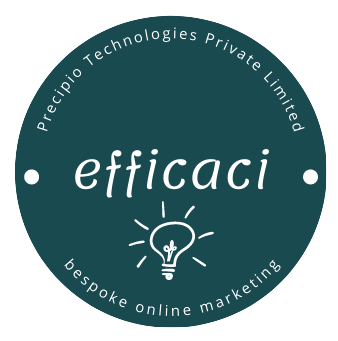Search Engine Optimization (SEO) is the backbone of digital marketing, enabling businesses to enhance their online visibility, attract targeted traffic, and foster user engagement. This comprehensive guide explores modern SEO practices and strategies for boosting engagement, covering key areas such as primary traffic, trust and credibility, user experience, and buying cycles. By implementing these techniques, businesses can align their online presence with search engine algorithms and user expectations, driving sustainable growth.
Understanding SEO and Its Importance
SEO is the process of optimizing a website to rank higher on search engine results pages (SERPs) for relevant keywords. It encompasses technical, on-page, and off-page strategies to improve organic visibility. In 2025, SEO remains critical as search engines like Google continue to refine their algorithms, prioritizing user intent, content quality, and website performance. Effective SEO not only drives traffic but also enhances user engagement, leading to higher conversions and brand loyalty.
Why SEO Matters
- Increased Visibility: Higher rankings on SERPs make your website more discoverable to potential customers.
- Cost-Effective Marketing: Organic traffic reduces reliance on paid advertising.
- User Trust: Websites ranking at the top are often perceived as more credible.
- Long-Term Growth: Well-optimized sites sustain traffic over time, unlike short-term ad campaigns.
Primary Traffic: The Foundation of SEO
Primary traffic refers to the organic visitors arriving at your website through search engines. It is the lifeblood of SEO, as it directly correlates with visibility and engagement. To maximize primary traffic, focus on the following strategies:
Keyword Research and Optimization
Keyword research is the cornerstone of SEO. Identify high-intent keywords relevant to your audience using tools like Google Keyword Planner, Ahrefs, or SEMrush. Focus on a mix of short-tail (e.g., “SEO tools”) and long-tail keywords (e.g., “best SEO tools for small businesses in 2025”) to capture diverse search intents.
- Search Intent: Align content with the user’s goal, whether informational, navigational, or transactional.
- Keyword Placement: Include primary keywords in titles, meta descriptions, headers, and throughout the content naturally.
- Semantic SEO: Use related terms and LSI (Latent Semantic Indexing) keywords to enhance relevance.
Content Creation and Optimization

High-quality, relevant content drives primary traffic by addressing user needs and your SEO practices. Create in-depth articles, guides, and blog posts that provide value. For example:
- Evergreen Content: Write timeless pieces like “How to Optimize Your Website for SEO” to maintain relevance.
- Skyscraper Technique: Identify top-performing content in your niche, improve it with updated data or visuals, and promote it.
- Internal Linking: Link related pages to guide users deeper into your site, increasing dwell time and reducing bounce rates.
Technical SEO for Traffic
Technical SEO ensures search engines can crawl and index your site efficiently. Key practices include:
- Site Speed: Use tools like Google PageSpeed Insights to optimize loading times. Compress images, leverage browser caching, and use a Content Delivery Network (CDN).
- Mobile Optimization: With over 60% of searches performed on mobile devices in 2025, ensure your site is responsive and mobile-friendly.
- XML Sitemaps: Submit an updated sitemap to Google Search Console to aid crawling.
- Structured Data: Implement schema markup to enhance SERP features like rich snippets, increasing click-through rates (CTR).
Trust and Credibility: Building Authority
Trust and credibility are pivotal for SEO success, as search engines prioritize authoritative websites. Google’s E-E-A-T (Experience, Expertise, Authoritativeness, Trustworthiness) framework guides this process.
Establishing Expertise
Showcase your knowledge through well-researched, factual content. For example:
- Author Bios: Include detailed bios for content creators, highlighting their qualifications.
- Citations and Sources: Link to reputable sources like academic journals or industry reports to back claims.
- Case Studies: Publish real-world examples of your success to demonstrate expertise.
Building Authoritativeness

Authority comes from external validation, primarily through backlinks. Focus on:
Social Proof: Display testimonials, reviews, or media mentions to enhance credibility.
Quality Backlinks: Earn links from high-authority sites in your niche through guest posting, outreach, or content partnerships.
Broken Link Building: Identify broken links on authoritative sites and offer your content as a replacement.
Enhancing Trustworthiness
Trust signals reassure users and search engines of your site’s reliability:
- SSL Certificates: Ensure your site uses HTTPS for secure browsing.
- Transparent Policies: Display clear privacy policies, terms of service, and contact information.
- User Reviews: Encourage authentic customer reviews on platforms like Google My Business or Trustpilot.
User Experience: The Core of Engagement
User experience (UX) directly impacts SEO rankings and engagement metrics like dwell time, bounce rate, and conversions. Google’s Core Web Vitals—Largest Contentful Paint (LCP), First Input Delay (FID), and Cumulative Layout Shift (CLS)—are critical for assessing UX.
Optimizing Core Web Vitals
- LCP (Loading Performance): Aim for an LCP under 2.5 seconds by optimizing server response times and reducing render-blocking resources.
- FID (Interactivity): Ensure FID is under 100 milliseconds by minimizing JavaScript execution time.
- CLS (Visual Stability): Maintain CLS below 0.1 by using fixed dimensions for images and ads.
Navigation and Design
A seamless UX encourages users to stay longer and explore more:
- Intuitive Navigation: Use clear menus, breadcrumbs, and a logical site structure.
- Responsive Design: Ensure your site adapts to all devices, from desktops to smartphones.
- Accessibility: Follow WCAG guidelines, such as providing alt text for images and keyboard navigation.
Engaging Content Formats
Diversify content to keep users engaged:
- Visuals: Use infographics, videos, and images to break up text and convey information.
- Interactive Elements: Incorporate quizzes, calculators, or polls to boost engagement.
- Clear CTAs: Include compelling calls-to-action (e.g., “Download Our Free SEO Guide”) to guide users toward conversions.
Buying Cycles: Aligning SEO with User Intent
Understanding the buying cycle—awareness, consideration, decision, and retention—helps tailor SEO strategies to user needs at each stage.
Awareness Stage
In the awareness stage, users seek information to solve a problem or learn something new. SEO strategies include:
- Informational Content: Create blog posts, guides, or videos addressing pain points (e.g., “What is SEO and Why It Matters”).
- Long-Tail Keywords: Target queries like “how to improve website ranking” to capture early-stage searchers.
- Social Media Amplification: Share content on platforms like X to drive traffic and increase brand awareness.
Consideration Stage
Users in the consideration stage evaluate solutions. Help them compare options with:
- Comparison Guides: Publish content like “Tool A vs. Tool B: Which is Better for SEO?”
- Case Studies and Testimonials: Highlight success stories to build trust.
- Lead Magnets: Offer free resources (e.g., eBooks, webinars) in exchange for email sign-ups to nurture leads.
Decision Stage
In the decision stage, users are ready to purchase or convert. Optimize your SEO practices for conversions with:
- Product Pages: Create detailed, keyword-optimized product or service pages with clear benefits and CTAs.
- Local SEO: For businesses with physical locations, optimize Google My Business profiles and use local keywords (e.g., “SEO services in New York”).
- Trust Signals: Display security badges, guarantees, or free trial offers to reduce purchase hesitation.
Retention Stage
Post-purchase engagement fosters loyalty and repeat business:
- Email Marketing: Send personalized follow-ups with tips, updates, or exclusive offers.
- Loyalty Content: Create exclusive content for existing customers, such as advanced SEO tutorials.
- Remarketing: Use targeted ads to re-engage past visitors with relevant offers.
Advanced SEO Techniques for 2025
To stay ahead in 2025, adopt cutting-edge SEO practices that align with evolving search engine algorithms and user behaviors.
Voice Search Optimization
With the rise of voice assistants, optimize for conversational queries:
- Natural Language: Use question-based keywords (e.g., “What are the best SEO practices for 2025?”).
- Featured Snippets: Structure content to answer queries concisely, aiming for position zero on SERPs.
- Local Voice Search: Optimize for “near me” queries to capture local voice search traffic.
AI and Machine Learning
Search engines increasingly rely on AI to understand user intent. Leverage AI tools to:
- Predict Trends: Use AI-driven tools like MarketMuse to identify emerging keywords.
- Personalize Content: Tailor content based on user behavior data from analytics platforms.
- Automate Tasks: Use AI for tasks like meta tag generation or content optimization.
Video SEO
Video content is a powerful engagement tool. Optimize videos by:
- Hosting on YouTube: Leverage YouTube’s search engine to drive traffic.
- Video Transcripts: Include transcripts with keywords to improve indexing.
- Thumbnails and Titles: Use compelling thumbnails and keyword-rich titles to boost clicks.
Measuring SEO Success
Track performance to refine your SEO strategies using tools like Google Analytics, Search Console, and third-party platforms.
Key Metrics
- Organic Traffic: Monitor the volume and quality of primary traffic.
- Keyword Rankings: Track target keyword positions over time.
- Engagement Metrics: Measure dwell time, bounce rate, and pages per session.
- Conversions: Track goal completions, such as form submissions or purchases.
- Backlink Profile: Assess the quantity and quality of backlinks using tools like Moz or Ahrefs.
Reporting and Analysis
Create regular reports to evaluate progress:
- Monthly Reports: Summarize traffic, rankings, and conversions.
- Competitor Analysis: Compare your performance against competitors to identify gaps.
- A/B Testing: Test variations of content, CTAs, or designs to optimize engagement.
Common SEO Pitfalls to Avoid
Avoid these mistakes to maintain SEO effectiveness:
- Keyword Stuffing: Overusing keywords harms readability and rankings.
- Low-Quality Content: Thin or duplicate content can lead to penalties.
- Ignoring Mobile UX: Poor mobile performance drives users away.
- Neglecting Analytics: Failing to track performance prevents optimization.
Conclusion
SEO is a dynamic, multifaceted discipline that requires a strategic approach to drive primary traffic, build trust, enhance user experience, and align with buying cycles. By implementing the SEO practices outlined—keyword optimization, technical SEO, high-quality content, and advanced techniques like voice search and AI—you can create a robust online presence that engages users and converts leads. Stay updated with algorithm changes, monitor performance, and adapt to user needs to ensure long-term SEO success.


0 Comments